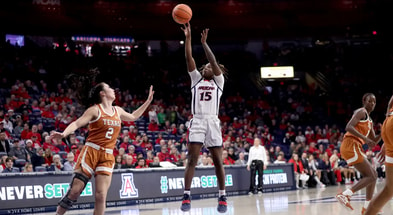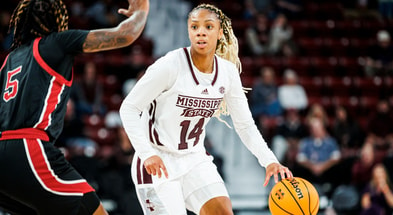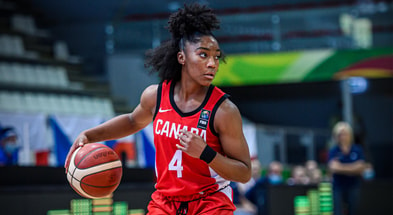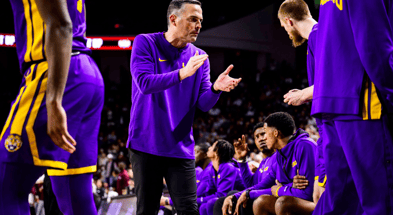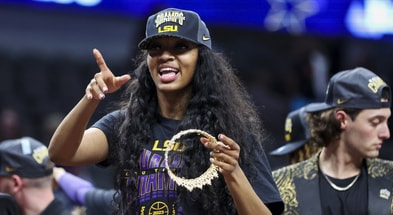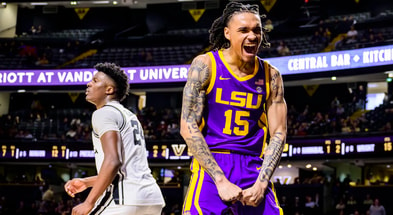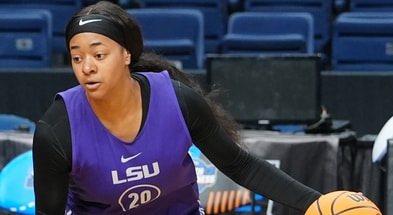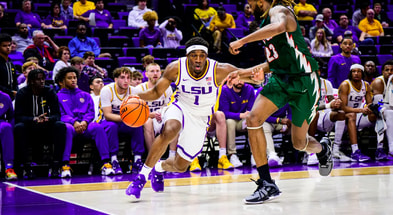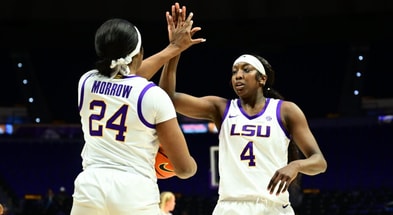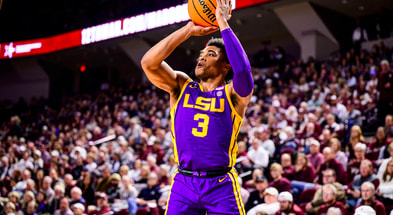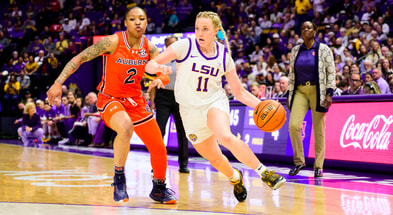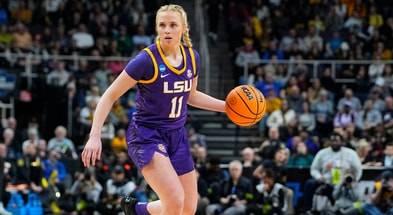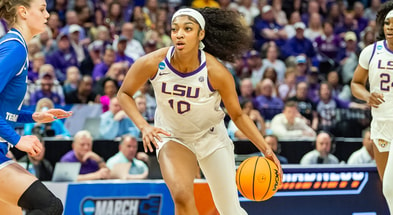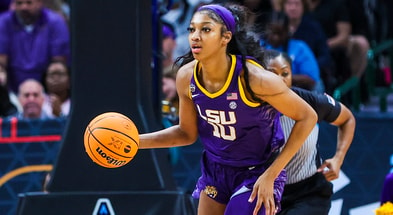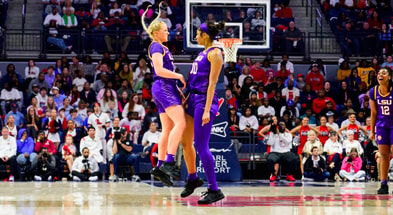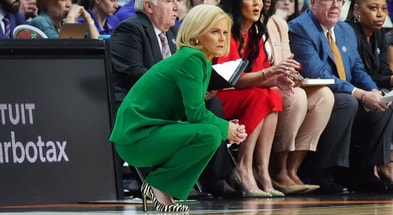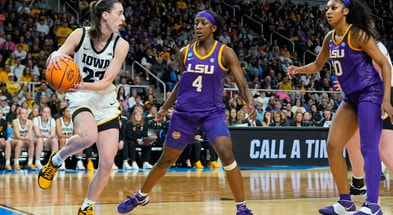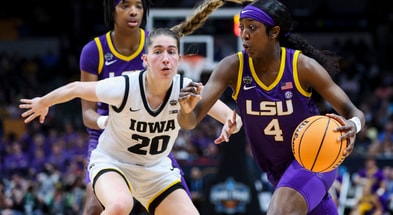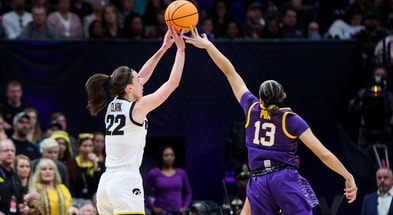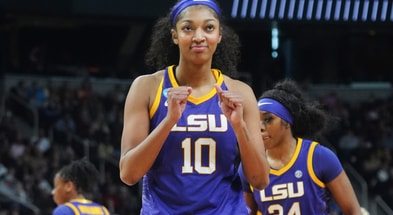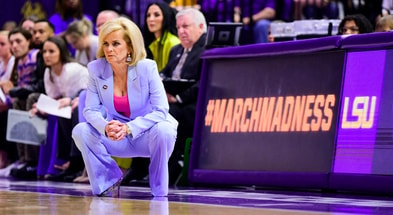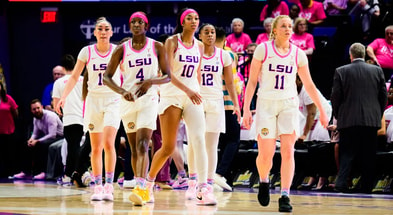Why Angel Reese will work (and win) in the WNBA
LSU forward Angel Reese was selected by the Chicago Sky with the No. 7 pick in the WNBA Draft on Monday night, thrusting her into the next step in her basketball journey. After four years of college and two incredible years at LSU, Reese will be paired with South Carolina center Kamilla Cardoso as the Sky’s two first round picks in the 2024 draft.
The intentions of the Sky are clear – solidify the frontcourt with size and toughness. Now, Reese has work to do. It’s been widely talked about how difficult it is to make it in the WNBA, but after a college career where Reese overcame every obstacle in her way, she now looks to elevate her game even more.
A lot of people have said Reese can’t make it in the WNBA, for one reason or another. I admit it will be challenging, but I want to write about why she will succeed. That doesn’t necessarily mean All-Star level, but Reese can be a quality player for a long time. Here’s why.
What about the shooting limitations?
Let’s talk about the first gripe people have with Reese: She can’t shoot.
I did a quick study, searching through all of the forwards in the WNBA last year (centers not included), looking to see how many of them were good shooters. Since that was the primary knock against Reese, I wanted to see how much of a detriment it would be in the WNBA. Out of 43 forwards, just 18 shot over 1 attempt per 36 minutes and shot over 30 percent.
That’s a pretty low bar to reach.
Let’s raise it up to just 1.5 3-pointers per 36 minutes and over 33 percent. There are just 13 forwards that reach that threshold. Of the 13 forwards who started 25 or more games, just six of them shot over 30 percent from deep.
In a league with only 12 teams, it’s clear the deep talent pool can leave players behind, but acting like Reese’s inability to shoot will be the primary reason she doesn’t do well is oversimplifying her game. She’s been a two-time All-American without shooting the ball. Her biggest area of growth on offense has to be her ability to finish and overall touch in the paint. The size of the WNBA can overwhelm her if she doesn’t get better at finishing without a hitch. She’ll be able to make more mid-range jumpers, therefore opening up her face-up game, and that’s going to have to be an area she attacks from. She’s a willing and able passer as well, and I’m interested to see if that could translate.
Those saying Reese won’t make it because she can’t shoot 3-pointers are both oversimplifying the game of basketball and being disappointingly unaware of what else Reese does well on a basketball court that impacts winning.
Her defensive impact
This is what is going to get Reese on the court in the league. She’s going to be a ferocious defender at the forward spot, especially if she’s alongside a player like Kamilla Cardoso who can handle the opposing five and a lot of the primary rim protection. Reese is incredibly switchable, has long arms, great instincts, and always brings the energy and communication on the defensive end.
Of the 43 forwards who recorded substantial stats in the WNBA last year, just 11 had over two combined steals and blocks per game. Reese for her career averaged 1.6 steals and 1.2 blocks and can step in and immediately provide value on defense.
Of course…her rebounding and motor
When Reese played the four as a junior, she averaged 15.4 rebounds per game. As the primary center for LSU this past year, she still averaged 13.4. Her returning to that forward spot is going to open up her game as a relentless rebounder and I expect her to be a hound on the offensive glass as she was in college.
Is it pretty? No. Does it help teams win? Of course. Reese’s style of basketball has never been aesthetically pleasing, but she fights and will immediately be a quality rebounder. The motor is something that you expect to play a role in her success as well. I compare her to Aaron Gordon in the NBA as a glue guy who can rebound and defend at a high level.
Expectations for year one
If we keep it modest, this year is just about getting on the floor and feeling out the game. The jump to the WNBA is substantial, but it’s not overwhelming. With Reese’s confidence and her adaptability, I expect the learning curve to be short and her to become a nice bench player fairly early.
There’s always hesitation from the WNBA community when a rookie comes in, but Aaliyah Boston came in and averaged 8.4 rebounds with 1.3 steals and 1.3 blocks last year. Haley Jones played in all 40 games and started six last year. Maddy Siegrist played in 39 games.
If Reese states ready and prepared, she can get on the court year one – then it’s about showing what makes her special.
